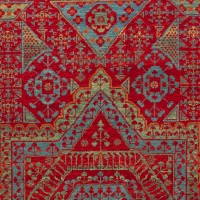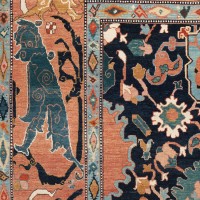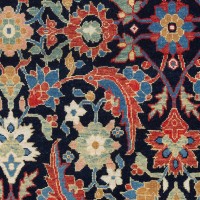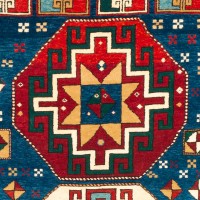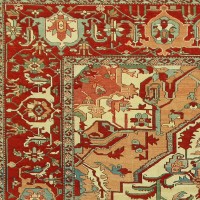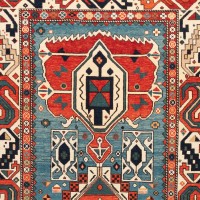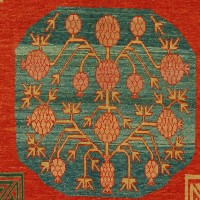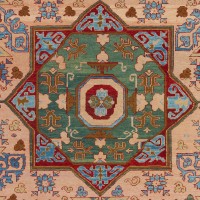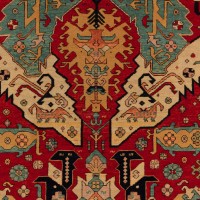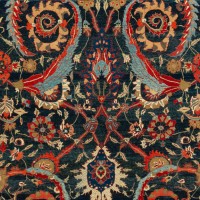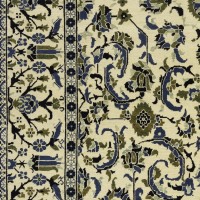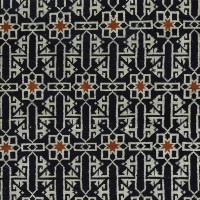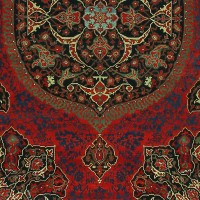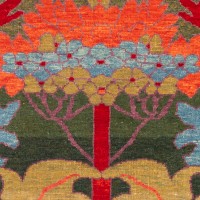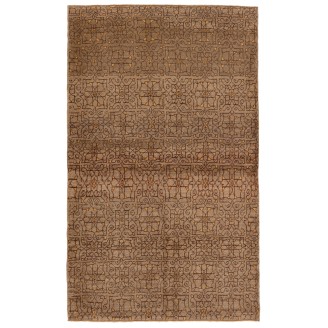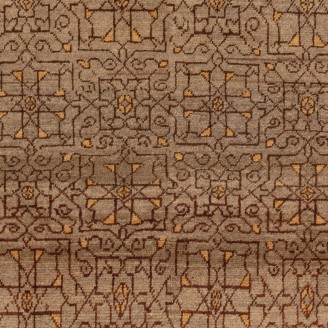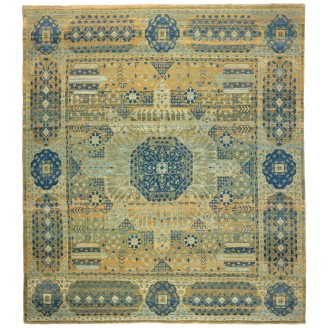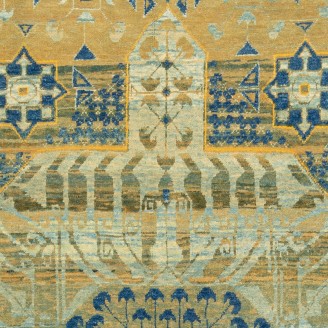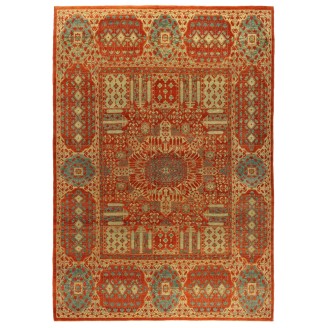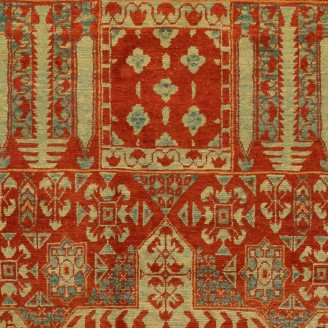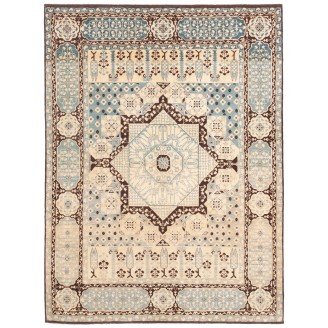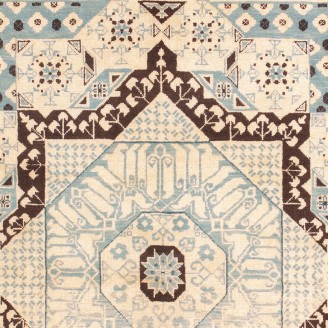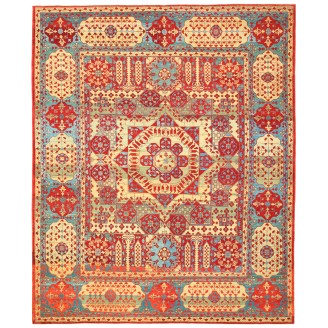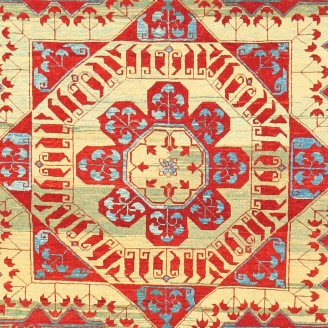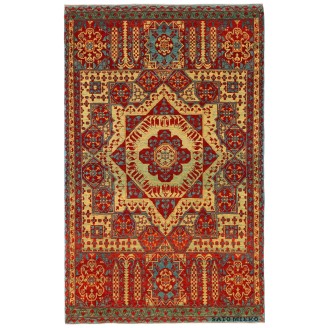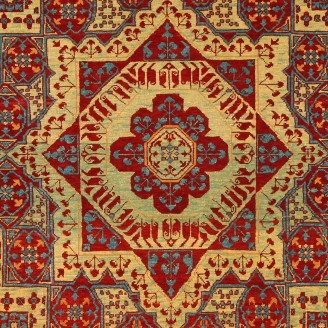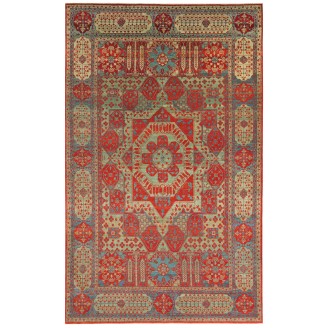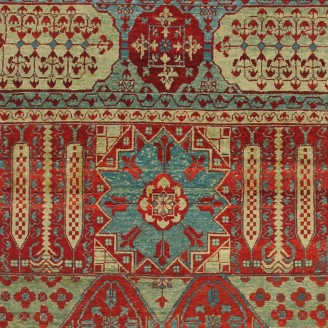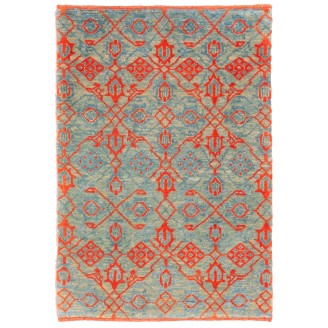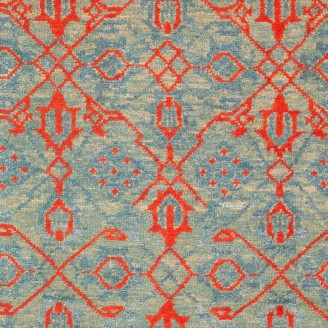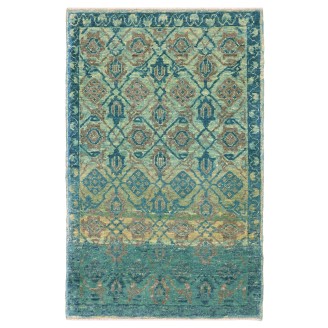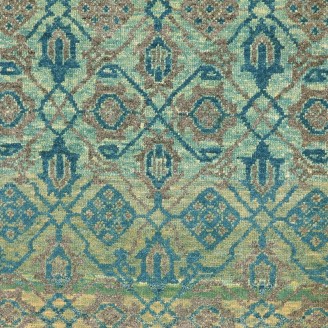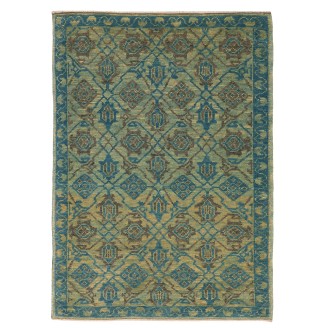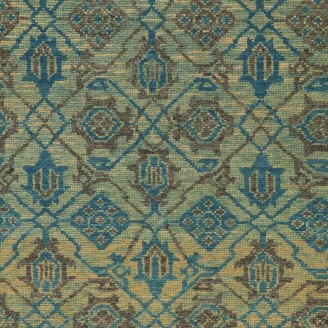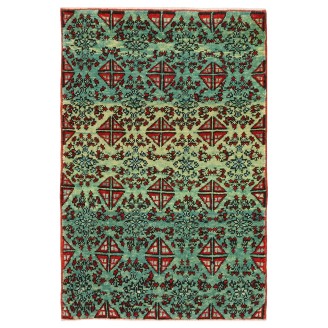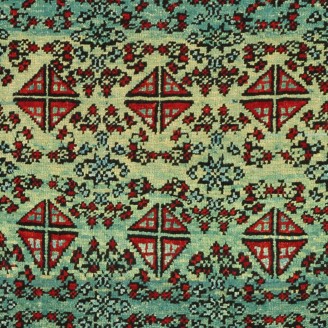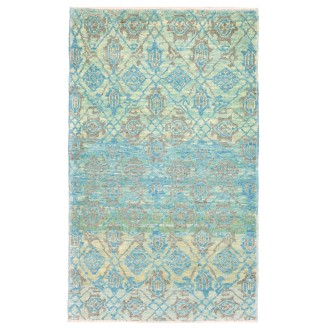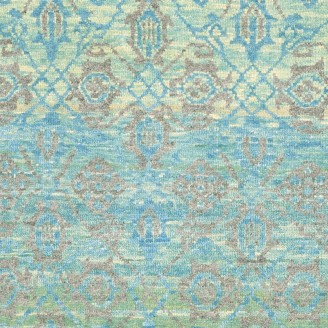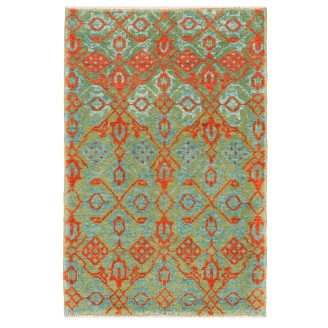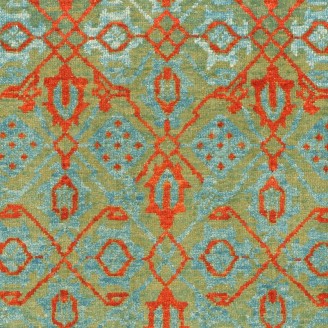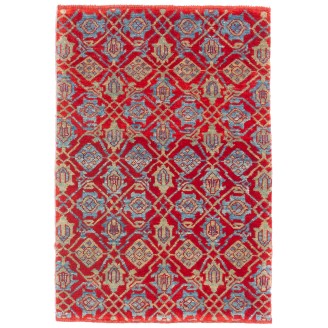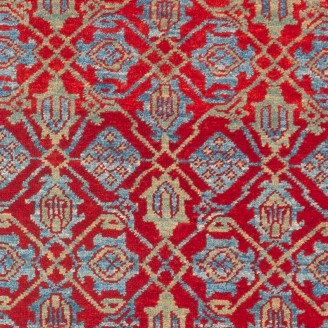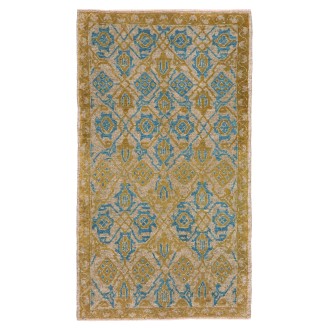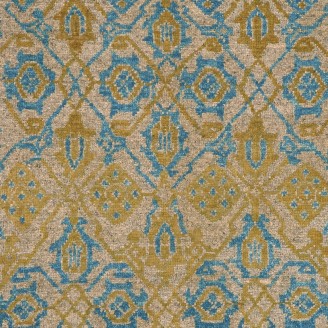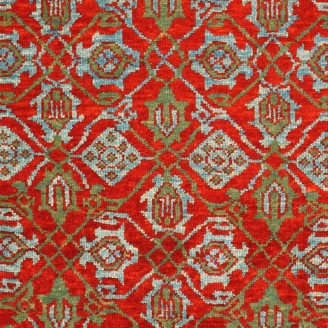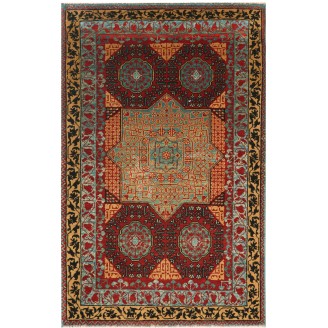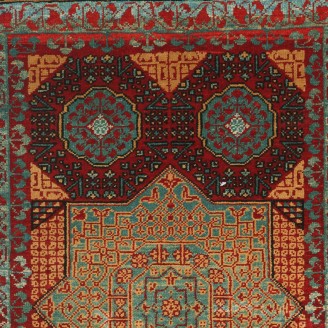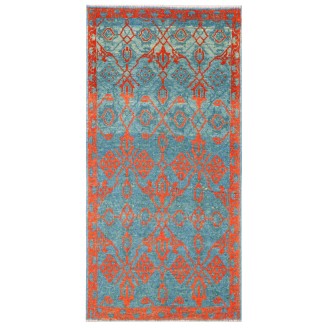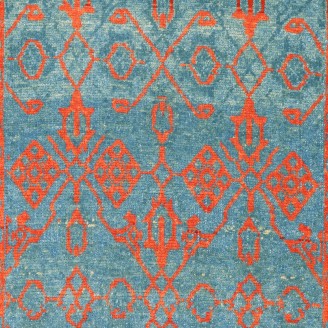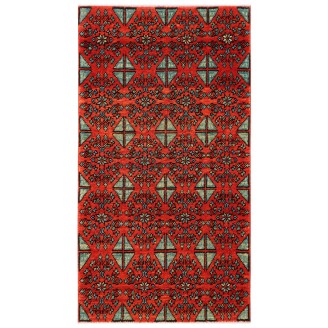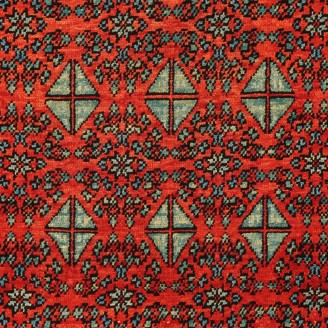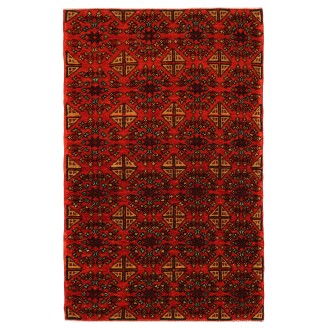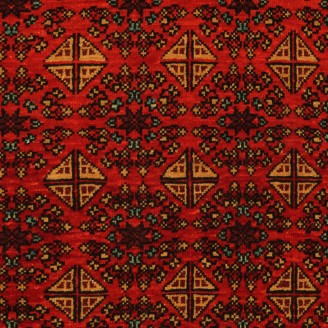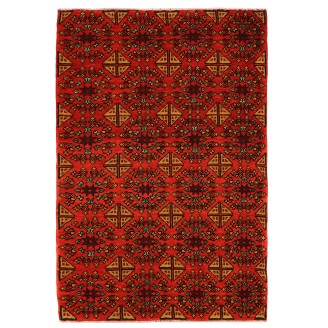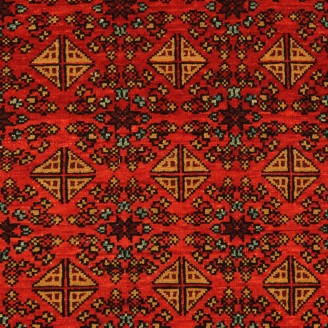Model: ART00313
Dimensions: 3'4" X 5'6"(103cm x 169cm)
The source of rug comes from the possession of Endre Unger, which was sold at Sotheby’s in 1992. That rug with the central star was designed in the early 16th-century rug by Mamluk Sultane of Cairo, Egypt. The interpreted design is composed of Jerrehian rug's border motifs lattice, covering the fiel..
Price:
$3,000
Ex Tax:$3,000
Model: ART00041
Dimensions: 8'2" X 9'3"(250cm x 283cm)
The source of the rug comes from the Herrmann Collection. This rug with the Medici Medallion was designed in the early 16th-century rug by Mamluk Sultane of Cairo, Egypt. Only one other rug closely resembles the Medici Carpet, discovered in 1983 by Alberto Boralevi in the Pitti Palace, Florence, the..
Price:
$21,000
Ex Tax:$21,000
Model: ART00139
Dimensions: 6'9" X 9'10"(208cm x 300cm)
The source of the rug comes from the Herrmann Collection. This rug with the Medici Medallion was designed in the early 16th-century rug by Mamluk Sultane of Cairo, Egypt. Only one other rug closely resembles the Medici Carpet, discovered in 1983 by Alberto Boralevi in the Pitti Palace, Florence, the..
Price:
$0
Ex Tax:$0
Model: ART00018
Dimensions: 5'2" X 7'0"(160cm x 214cm)
The source of the rug comes from the book Renaissance of Islam, Art of the Mamluks, Esin Atil, Smithsonian Institution Press, Washington D.C., 1981 nr.126. This rug with palm trees and cypresses was designed in the late 15th-century rug by Mamluk Sultane of Cairo, Egypt. It is exhibited at the Washi..
Price:
$9,900
Ex Tax:$9,900
Model: ART00042
Dimensions: 8'7" X 10'5"(263cm x 320cm)
The source of the rug comes from the book Renaissance of Islam, Art of the Mamluks, Esin Atil, Smithsonian Institution Press, Washington D.C., 1981 nr.126. This rug with palm trees and cypresses was designed in the late 15th-century rug by Mamluk Sultane of Cairo, Egypt. It is exhibited at the Washi..
Price:
$24,000
Ex Tax:$24,000
Model: ART00235
Dimensions: 3'3" X 5'1"(100cm x 157cm)
The source of the rug comes from the book Renaissance of Islam, Art of the Mamluks, Esin Atil, Smithsonian Institution Press, Washington D.C., 1981 nr.126. This rug with palm trees and cypresses was designed in the late 15th-century rug by Mamluk Sultane of Cairo, Egypt. It is exhibited at the Washi..
Price:
$0
Ex Tax:$0
Model: ART00029
Dimensions: 6'5" X 10'4"(198cm x 316cm)
The source of the rug comes from the book Renaissance of Islam, Art of the Mamluks, Esin Atil, Smithsonian Institution Press, Washington D.C., 1981 nr.126. This rug with palm trees and cypresses was designed in the late 15th-century rug by Mamluk Sultane of Cairo, Egypt. It is exhibited at the Washi..
Price:
$16,500
Ex Tax:$16,500
Model: ART00023
Dimensions: 1'8" X 2'5"(51cm x 74cm)
This lattice pattern is composed of palmettes and leaves filling the various compartments against the imposing ground. One has the impression that it is only part of a larger scheme designed 15th-century rug from the Mamluk era, Cairo region, Eygpt. These designs have often been described as wagireh..
Price:
$825
Ex Tax:$825
Model: ART00222
Dimensions: 1'9" X 2'9"(54cm x 84cm)
This lattice pattern is composed of palmettes and leaves filling the various compartments against the imposing ground. One has the impression that it is only part of a larger scheme designed 15th-century rug from the Mamluk era, Cairo region, Eygpt. These designs have often been described as wagireh..
Price:
$825
Ex Tax:$825
Model: ART00121
Dimensions: 1'9" X 2'5"(54cm x 76cm)
This lattice pattern is composed of palmettes and leaves filling the various compartments against the imposing ground. One has the impression that it is only part of a larger scheme designed 15th-century rug from the Mamluk era, Cairo region, Eygpt. These designs have often been described as wagireh..
Price:
$825
Ex Tax:$825
Model: ART00091
Dimensions: 1'7" X 2'6"(50cm x 77cm)
The source of carpet comes from the book Völker, Angela, Die Orientalischen Knüpfteppiche das MAK, Vienna: Böhlau, 2001: 42–5. The rug with the central star was designed in the early 16th-century rug by Mamluk Sultane of Cairo, Egypt. It is exhibited at MAK – Museum of Applied Arts, Vienna Austria. ..
Price:
$650
Ex Tax:$650
Model: ART00149
Dimensions: 1'8" X 2'10"(53cm x 88cm)
This lattice pattern is composed of palmettes and leaves filling the various compartments against the imposing ground. One has the impression that it is only part of a larger scheme designed 15th-century rug from the Mamluk era, Cairo region, Eygpt. These designs have often been described as wagireh..
Price:
$825
Ex Tax:$825
Model: ART00084
Dimensions: 1'8" X 2'7"(52cm x 79cm)
This lattice pattern is composed of palmettes and leaves filling the various compartments against the imposing ground. One has the impression that it is only part of a larger scheme designed 15th-century rug from the Mamluk era, Cairo region, Eygpt. These designs have often been described as wagireh..
Price:
$825
Ex Tax:$825
Model: ART00019
Dimensions: 1'8" X 2'5"(51cm x 76cm)
This lattice pattern is composed of palmettes and leaves filling the various compartments against the imposing ground. One has the impression that it is only part of a larger scheme designed 15th-century rug from the Mamluk era, Cairo region, Eygpt. These designs have often been described as wagireh..
Price:
$825
Ex Tax:$825
Model: ART00150
Dimensions: 1'8" X 2'11"(51cm x 90cm)
This lattice pattern is composed of palmettes and leaves filling the various compartments against the imposing ground. One has the impression that it is only part of a larger scheme designed 15th-century rug from the Mamluk era, Cairo region, Eygpt. These designs have often been described as wagireh..
Price:
$825
Ex Tax:$825
Model: ART00085
Dimensions: 1'8" X 2'5"(51cm x 75cm)
This lattice pattern is composed of palmettes and leaves filling the various compartments against the imposing ground. One has the impression that it is only part of a larger scheme designed 15th-century rug from the Mamluk era, Cairo region, Eygpt. These designs have often been described as wagireh..
Price:
$0
Ex Tax:$0
Model: ART00020
Dimensions: 2'4" X 3'7"(72cm x 111cm)
The source of the rug comes from the book Völker, Angela, Die orientalischen Knüpfteppiche das MAK, Vienna: Böhlau, 2001: 42–5. This rug with the central star was designed in the early 16th-century rug by Mamluk Sultane of Cairo, Egypt. It is exhibited at MAK – Museum of Applied Arts, Vienna Austria..
Price:
$1,250
Ex Tax:$1,250
Model: ART00060
Dimensions: 1'8" X 3'5"(53cm x 105cm)
This lattice pattern is composed of palmettes and leaves filling the various compartments against the imposing ground. One has the impression that it is only part of a larger scheme designed 15th-century rug from the Mamluk era, Cairo region, Eygpt. These designs have often been described as wagireh..
Price:
$825
Ex Tax:$825
Model: ART00077
Dimensions: 1'9" X 2'11"(54cm x 90cm)
The source of carpet comes from the book Völker, Angela, Die Orientalischen Knüpfteppiche das MAK, Vienna: Böhlau, 2001: 42–5. The rug with the central star was designed in the early 16th-century rug by Mamluk Sultane of Cairo, Egypt. It is exhibited at MAK – Museum of Applied Arts, Vienna Austria. ..
Price:
$400
Ex Tax:$400
Model: ART00124
Dimensions: 1'10" X 2'10"(58cm x 88cm)
The source of carpet comes from the book Völker, Angela, Die Orientalischen Knüpfteppiche das MAK, Vienna: Böhlau, 2001: 42–5. The rug with the central star was designed in the early 16th-century rug by Mamluk Sultane of Cairo, Egypt. It is exhibited at MAK – Museum of Applied Arts, Vienna Austria. ..
Price:
$825
Ex Tax:$825
Model: ART00125
Dimensions: 1'11" X 2'10"(59cm x 87cm)
The source of carpet comes from the book Völker, Angela, Die Orientalischen Knüpfteppiche das MAK, Vienna: Böhlau, 2001: 42–5. The rug with the central star was designed in the early 16th-century rug by Mamluk Sultane of Cairo, Egypt. It is exhibited at MAK – Museum of Applied Arts, Vienna Austria. ..
Price:
$825
Ex Tax:$825
